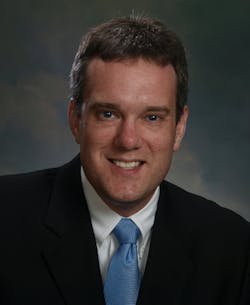By Jon Straw
What happens when there may be a “significant nexus” between “adjacent” and/or “relatively permanent” “Waters of the United States” (WOTUS)?
Answer: Confusion, uncertainty, ambiguity, great consternation, and litigation leading to an opinion by the highest court in the land.
It is not often that the U.S. Supreme Court (USSC) decides something impacting the construction industry, so I could not resist writing about this one: Sackett v. EPA, No. 21-454. The Supreme Court’s opinion is long and full of history, as most USSC opinions are, but this column attempts to share the most important parts.
In 2004, the Sackett’s were (and may still be) owners of a residential property in Idaho. They were backfilling the lot with dirt to prepare for building a house when the Environmental Protection Agency (EPA) informed them that their property included wetlands, and the backfilling operation violated the Clean Water Act (CWA) because it was occurring near a ditch that fed into a nearby creek.
The CWA prohibits discharging pollutants into WOTUS. The EPA decided the ditch and nearby creek were part of the WOTUS and ordered the owners to restore the site or pay fines of over $40,000 per day.
At that time, the EPA interpreted WOTUS to include “[a]ll . . . waters” that “could affect interstate or foreign commerce,” and “[w]etlands adjacent” to WOTUS. “Adjacent” meant not just “bordering” or “contiguous, but also neighboring.” Even the non-navigable creek that fed into a lake nearby the owner’s property was a WOTUS entirely within Idaho that the EPA deemed traditionally navigable.
Taken to its logical extreme, permits could be required for roadside ditches or even puddles that are regularly wet.
On May 25, the USSC decided the EPA exceeded its authority. In its decision, the USSC stated that “the CWA extends only to those ‘wetlands with a continuous surface connection to bodies that are ‘waters of the United States’ in their own right,’ so that they are indistinguishable from those waters.”
The USSC further stated, the term “waters” in the CWA means only “geographic[al] features that are described in ordinary parlance as ‘streams, oceans, rivers, and lakes’” and to adjacent wetlands that are “indistinguishable” from those bodies of water due to a continuous surface connection.
Despite this ruling, the USSC also said, “[t]he meaning of [WOTUS] under the EPA’s interpretation remains ‘hopelessly indeterminate.’”
The USSC did not eviscerate the CWA. The Supreme Court acknowledged the CWA (since its enactment in 1972) has done much good to clean-up “formerly fetid bodies of water.” Indeed, the “CWA is a potent weapon.”
Negligent discharge of pollutants can result in criminal penalties including imprisonment. Civil penalties can be “crushing consequences” for negligent acts and worse for willful violations.
On September 8, the EPA and U.S. Army Corps of Engineers published a new version of the rule that narrows the scope of WOTUS and attempts to address some of the USSC’s findings of uncertainty in the old rule.
Nevertheless, the latest rule still includes several ambiguities.
WOTUS now includes traditional navigable waters, territorial seas, interstate waters, tributaries of such waters that are “relatively permanent,” standing or continuously flowing bodies of water, wetlands having a continuous surface connection to WOTUS, and intrastate lakes, ponds, streams, or wetlands that are “relatively permanent,” standing or continuously flowing bodies of water with a continuous surface connection to navigable waters, territorial seas, or interstate waters.
Additional bodies of water may still be regulated by state authorities, but this is the new boundary for federal regulation. The term “adjacent” now means “a continuous surface connection.”
However, this latest version of the rule does not define “relatively permanent,” which will still require a case-by-case determination by the local Army Corps district. Recordings from EPA and Army Corps informational presentations about the latest rule revisions will be posted to the EPA’s website at https://www.EPA.gov/WOTUS. R&B




